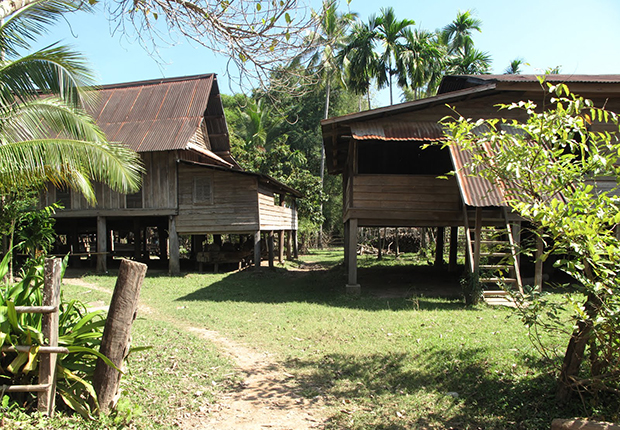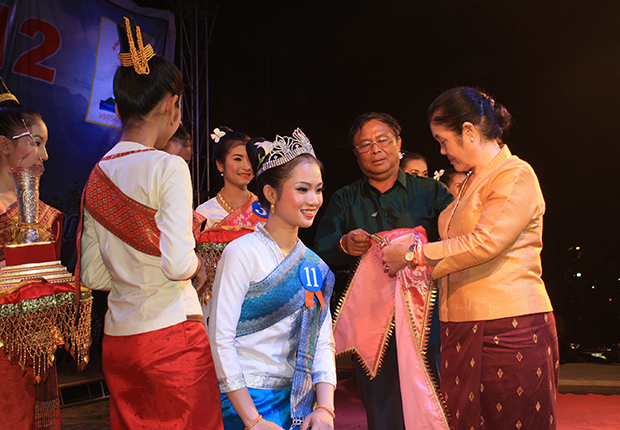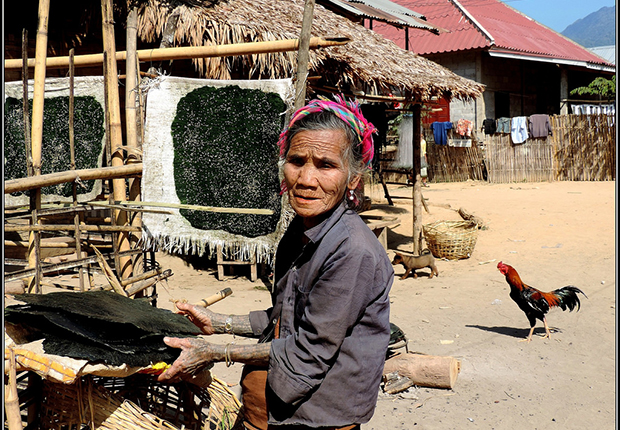Accounting for around 60 percent of Laos’ population, Lao Loum is surely the major group of Laos people over Lao Theung and Lao Soung. They live in the lowland Laos, near the river, delta in capital Vientiane or the center city such as: Luang Prabang, Pakse, etc; their behavior, custom, tradition strongly determine Laos nowadays. Let’s discover some feature which distinct this general ethnic group from others.
Community & Family
Laos Loum or Lowland Laos usually gather in the river bank where the land is fertilized and suitable for growing rice. They often live in an independent village near the river bank; therefore, it causes a big problem in soil erosion when some of them still keep the nomadic lifestyle: leaving a land when it is no longer suitable for cultivation.
An ideal family of Lao Loum is regarded as a nuclear family consisting of parents and their unmarried children, quite different from other Asian country while Asian often dreams about an extended family with many generations. However, it doesn’t mean that they don’t want to maintain a strong link with their relatives; Laos Loum still keeps tight relationship with their kin and blood relation. In spite of following nomadic lifestyle, community’s responsibility is shared among them and everyone hold responsibility for social development.
Men and woman shares their tasks equally. Men are prone to doing heavy jobs, selling big things such as buffalos, pigs, etc or work on the field. Meanwhile, women will responsible for cooking, taking care of children, managing housing, selling vegetable, herbs, preparing the seeds for cultivation, etc.
Housing
We will start with the large unit of housing is village. Since agriculture plays an important role in Laotian life, Lao Loum often places their village in the area which can easily get access to paddy field and each village is separated by unused land and rice paddy field. The average number of household in a village is around 200-300 meanwhile there are 40-50 houses.

The traditional house is built on stilt with the wood piles 1 or 2 meters higher than the ground. The aim of this building style is to prevent flooding or mud during the wet season and also remain a shade area for daily rest in the extremely hot summer. Sometimes, they also raise livestock in the first floor. The family’s wealth is revealed through house decoration; based on their condition, the wall and floor can be made of bamboo or wood, for some ancient house, according to old perspective, clay tiles is represented for richness.
Practices & Traditional Customs
The major of Laos Loum put their belief in Theravada Buddhism but still under the influence of Animism or spiritual belief. Each village always has its own wat as the religious center. The monk is appreciated and received respect from locals. Animism hasn’t disappeared but has been limited by the government when they are afraid that some people will take advantage of it and deceive other. Above all, Animism still exists implicitly.
Traditional costume of Laos Loum, the Sinh nowadays can be considered Laos traditional costume for women. The skirt “Sinh” together with French inspired blouse cover with “Pha Biang” (scarves) crossover-body.

Lao Thais
Lao Thai is a subgroup belonging to Laos Loum, but they do not live lowland Laos but prefers upland valley as a tribe. Thais people in Laos are different from Thais people in Thailand, but they all belong to Tais group. Their clothes are also not similar to Lao Loum traditional clothing. Some Lao Thais can be mentioned here are Black Thai (Thai Dam), White Dam (Thai Khao), Red Thai (Thai Daeng), Forest Thai (Thai Pa), Northern Thai (Thai Neua). Among them, Thai Dam is the dominance group in Lao Thais and easily recognized by their black costume.
Gaining an understanding of the Lao Loum, the main ethnic group of Laotian people, can greatly enrich one's Laos tour experience. From visiting traditional villages and engaging in cultural exchanges to partaking in authentic Lao Loum cuisine, travelers can embrace the vibrant heritage of the Lao Loum and appreciate the diversity that Laos has to offer. By immersing themselves in the rich tapestry of Lao Loum culture, tourists can create lasting memories and forge meaningful connections during their Laos tour.

